- Local Time: 10:16 AM
- Weather: 23 ℃ / 74 ℉
Ancient Egyptian pharaohs were more than kings, they were seen as living gods whose lives were shaped by ritual, symbolism, and divine authority. This article reveals ten lesser-known facts about their roles, from the late adoption of the title

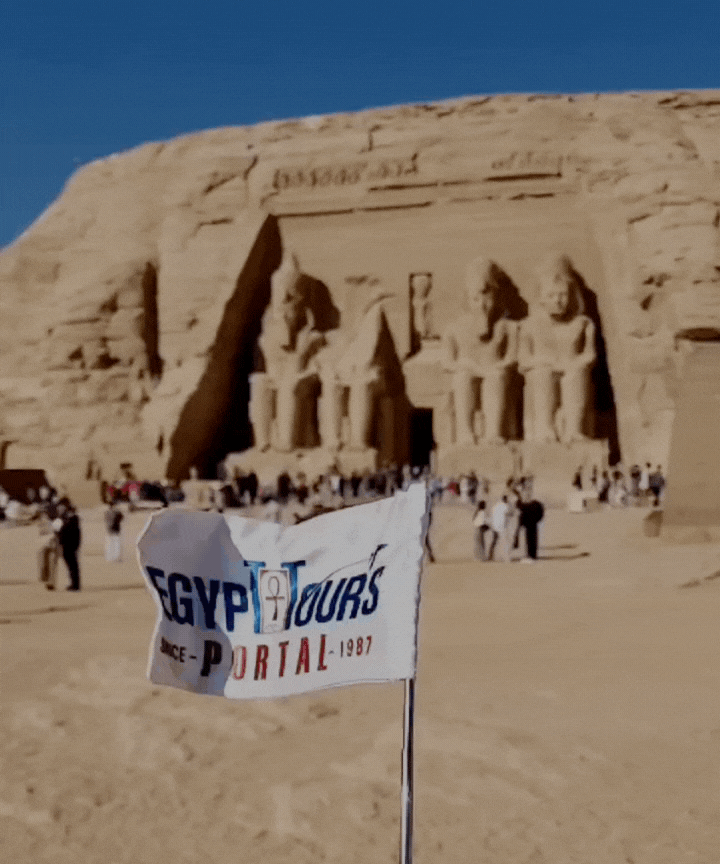
Ancient Egyptian pharaohs had highly unique lives, filled with power, divinity, mystery, and profound meaning. These rulers weren't just kings; they were considered living ancient Egyptian gods, embodying both earthly and celestial authority. From wearing symbolic crowns that struck fear into their enemies to spending their entire reigns preparing for the afterlife, the pharaohs led lives filled with grandeur, ritual, and secrets.
Each pharaoh left an indelible mark on history through customs and traditions that often defied explanation, captivating us thousands of years later. In this article, we will shed light on the top ten most fascinating and lesser-known facts about these extraordinary figures, exploring their remarkable roles, mysterious ancient Egyptian symbols, and enduring legacies. Prepare to be amazed by the intriguing world of the ancient pharaohs and the timeless allure they hold over us even today.

While the word "Pharaoh" is commonly used today to refer to ancient Egyptian kings, its origin is surprisingly different from what most people assume. The term is derived from the Egyptian phrase “Per-aa,” which translates to "Great House" or "High House," originally referring to the royal palace rather than the person who ruled from it. This title became associated with the monarch only in the New Kingdom period (1570–1070 BCE).
By the time of the 18th Dynasty (1550–1292 BCE), it was used to address kings in correspondence, like letters to Amenhotep IV. It wasn’t until around 1200 BCE, during the reign of Merneptah, that "Pharaoh" was regularly used as a title for the king himself. This shift marks a significant evolution in the perception of royal authority, merging the idea of the king with the state itself. Interestingly, "Pharaoh" was primarily a term for male rulers, though queens like Hatshepsut occasionally bore the title, showing its flexibility as a symbol of royal power.
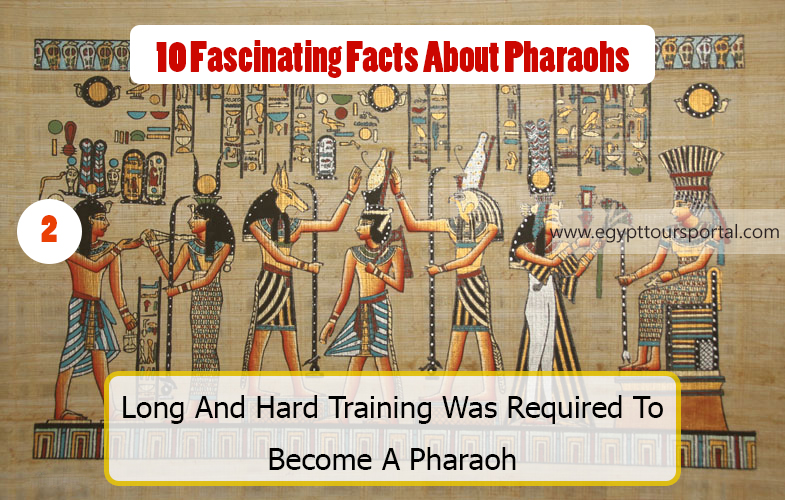
The position of Pharaoh was not only inherited but also required rigorous training. Young princes destined to rule went through intense preparation to build physical, mental, and leadership abilities. They would participate in demanding activities like long-distance running to improve endurance, wrestling, archery, and even hand-to-hand combat. Hunting expeditions were also crucial; these experiences allowed young pharaohs to demonstrate bravery, control over wild animals, and hunting skills, often expected of leaders.
They trained in equestrian skills to master chariot handling, which is a critical asset in both ceremonial events and warfare. Ancient Egyptian Military tactics and statecraft lessons were also included to prepare them for the political and military challenges of ruling an empire. The emphasis on strength and strategy highlights the Pharaoh's role as both warrior and diplomat, showcasing their comprehensive training as an embodiment of Egyptian values and power.

Pharaohs were considered not just rulers but as living deities, responsible for maintaining Egypt’s cosmic order, or maat. As high ancient Egyptian priests, they were the primary intermediaries between the gods and the people, performing rituals to secure the gods’ favor and protect Egypt from calamities. Ritual offerings were made daily to honor deities and ensure harmony, prosperity, and divine protection.
Pharaohs alone had the privilege of entering the temple’s innermost sanctum to place offerings, which included food, incense, and valuable items. Their actions were believed to please the gods, thereby granting them divine protection and blessings. Ancient Egyptian Temples were seen as literal homes of the gods, housing their spirits within sacred statues. By maintaining this sacred link, Pharaohs embodied the divine power of the gods on Earth, and their ritual roles reinforced their authority and connection with the divine.
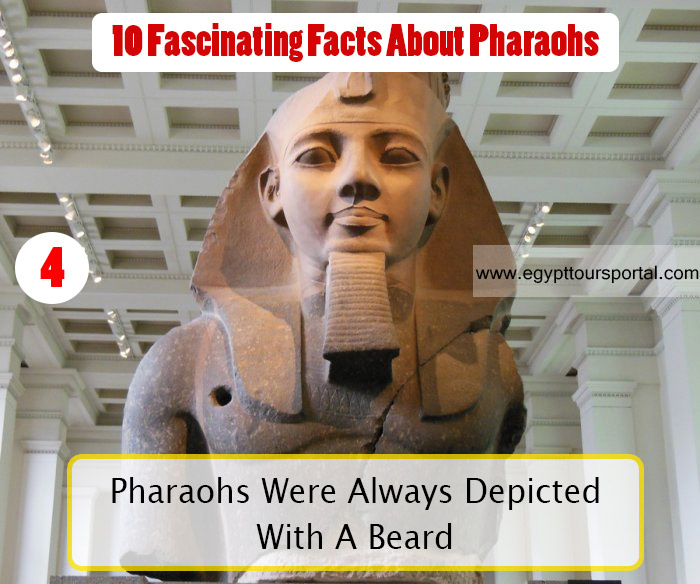
Depictions of pharaohs show them wearing a ceremonial beard, often plaited or styled, which was actually a false, symbolic beard worn during official ceremonies. This false beard, with styles differentiating between mortals and gods, visually connected pharaohs to deities like Osiris, reinforcing their role as mediators between life and the afterlife. This custom was rooted in a belief that the beard was a symbol of divinity. Since many Egyptian men preferred to be clean-shaven, the beard served as a visible link between the pharaoh and the gods, emphasizing the ruler's semi-divine status.
This false beard, with styles differentiating between mortals and gods, visually connected pharaohs to deities like Osiris, reinforcing their role as mediators between life and the afterlife. Even female pharaohs like Hatshepsut adopted this custom, wearing a false beard to align themselves with male predecessors and assert their authority. Together with other royal symbols, the beard emphasized the pharaoh's role as a god-like figure, responsible for upholding order and justice (maat) and bridging the mortal and divine realms. The beard symbolized the pharaoh’s role as a god on Earth, blurring the lines between human and divine in Egyptian iconography.

The Pharaoh in ancient Egyptian society was more than a political leader; they were seen as a divine being with supreme authority over both the earthly and spiritual realms. They bore titles like “High Priest” and “Lord of the Two Lands” (Upper and Lower Egypt), which signified their responsibility for the nation's political stability and religious observance. Pharaohs made laws, regulated taxes, owned vast land holdings, and led the military.
Their duty extended to maintaining maat, or harmony, in the land, where a concept that represented order, justice, and balance. Pharaohs were also responsible for constructing temples and monuments, which served as places for worship and housed religious ancient Egyptian festivals. By ensuring the gods were honored, pharaohs upheld their role as protectors of Egypt, legitimizing their reign as divinely sanctioned.

The Nemes headdress, often depicted in artwork, was a striped cloth that draped over the pharaoh’s head, signifying royal status and protection. Often worn with the Uraeus, which is a stylized cobra symbol, it represented the goddess Wadjet, symbolizing protection and readiness to strike down enemies of ancient Egypt. The Uraeus symbolized a divine warning against challengers to the throne.
Pharaohs were also frequently shown with the crook and flail, ancient symbols of rulership. The crook represented the shepherd’s role as a caring leader, while the flail symbolized the ruler's responsibility to protect and provide for their people. This symbolic attire conveyed the pharaoh’s combined roles of caregiver, protector, and divine representative.
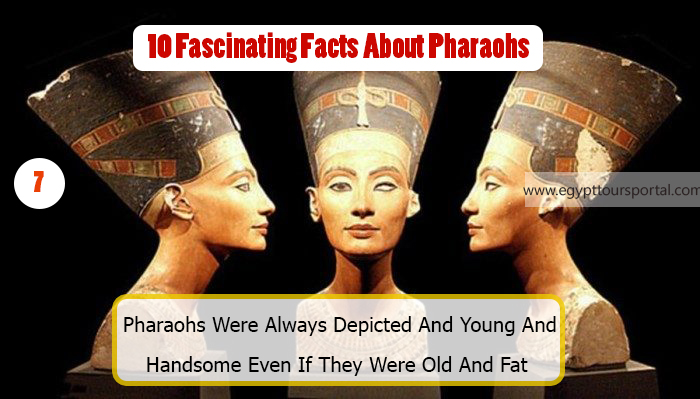
Ancient Egyptian art idealized pharaohs, portraying them as eternally youthful, strong, and beautiful, regardless of their actual age or appearance. This idealization served to emphasize their divine status and the cultural ideal of beauty as a sign of divine favor. Their connection to gods like Horus and Ra reflects cultural beliefs that associated physical perfection with spiritual virtue. This portrayal reinforced the pharaoh’s timeless authority and stability, presenting them as vigorous protectors of maat (cosmic order), regardless of their real age or appearance.
Such portrayals were not merely artistic embellishments but a deliberate attempt to convey the timeless, godlike nature of the pharaoh. This artistic choice also ensured that the pharaoh appeared perpetually capable of leading the nation, reinforcing public confidence in their rule. Even aging pharaohs, therefore, were immortalized in sculptures, paintings, and carvings as idealized symbols of strength and wisdom.

The pharaoh was seen as the earthly embodiment of Horus, the sky god associated with kingship, protection, and victory. In ancient Egyptian mythology, Horus, who was the son of Osiris and Isis, famously avenged his father’s death by defeating his evil uncle Seth, symbolizing the restoration of order. By identifying themselves with Horus, pharaohs symbolized their role as defenders of Egypt and as victors over chaos and disorder. After death, pharaohs were believed to transform into Osiris, ruler of the afterlife, thus continuing the cycle of life, death, and rebirth that was central to Egyptian beliefs. This association with Horus in life and Osiris in death reinforced the pharaoh's role as both a temporal ruler and a timeless god.
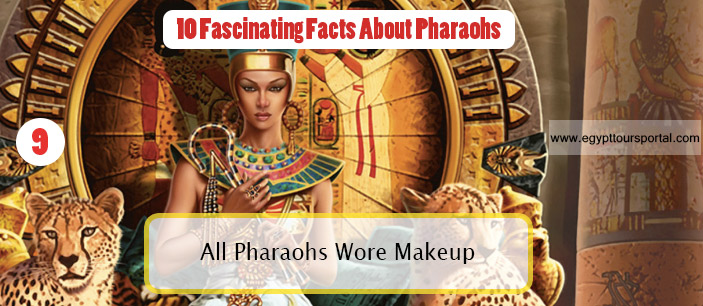
Makeup held both practical and spiritual significance for pharaohs. They wore black kohl around their eyes, a practice believed to mimic the divine protection of Horus and reduce glare from the sun, particularly important in Egypt’s bright climate. The almond-shaped outline not only resembled Horus's eyes, offering protection, but was also thought to ward off evil spirits and prevent eye infections. Pharaohs, both men and women, also adorned themselves with blue and green eyeshadow, symbolic of rebirth, the Nile River, and fertility. This use of makeup demonstrates the Egyptians' blend of practical, aesthetic, and spiritual beliefs in everyday practices.
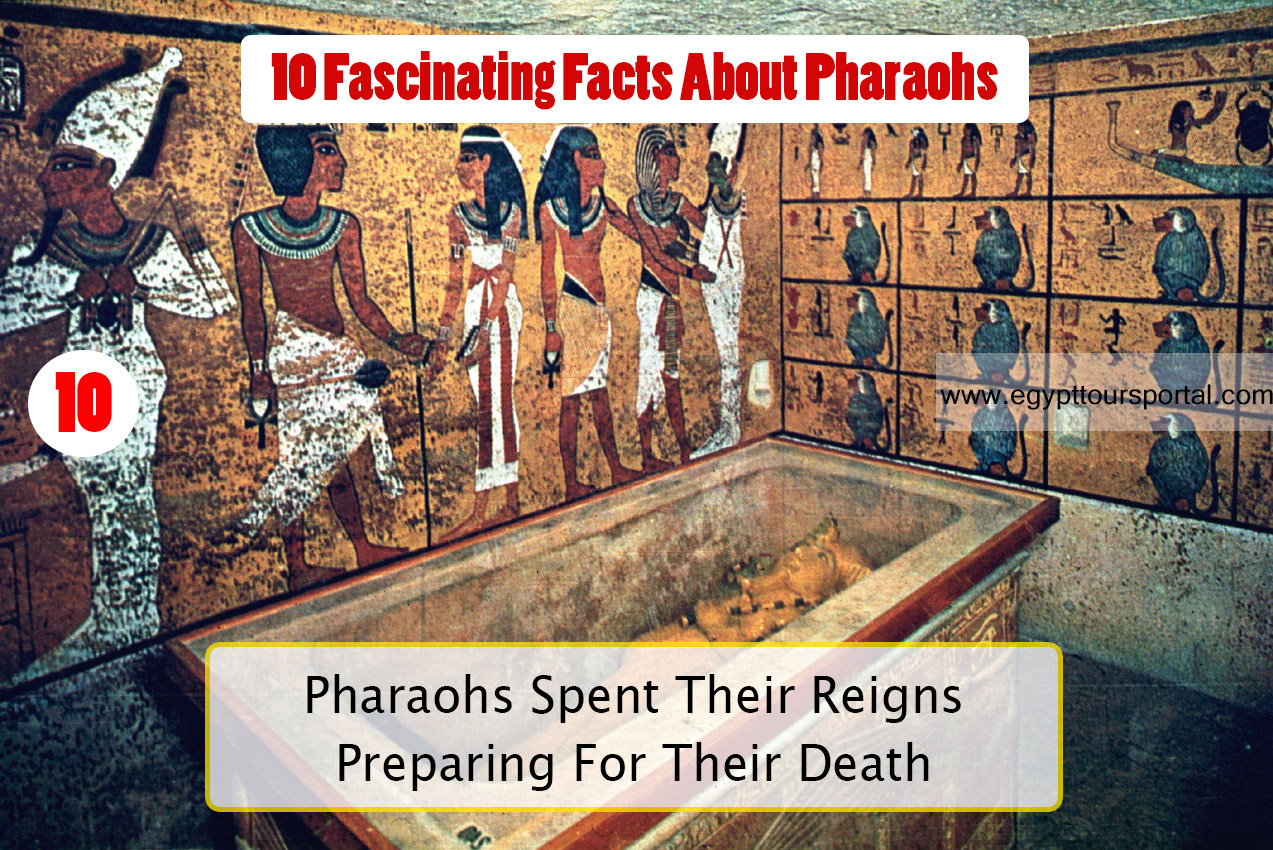
The ancient Egyptians believed that life continued after death and that preparations during one's lifetime were essential for a prosperous afterlife. Pharaohs commissioned elaborate tombs, stocked with riches, furniture, food, and even boats to ensure they had everything needed in the next world.
The Valley of the Kings, where many were buried, is a testament to this obsession with the afterlife, featuring intricate tombs filled with art and items meant to guide and sustain the pharaoh’s soul. Funerary ancient Egyptian texts, like the Book of the Dead, contained spells and instructions to navigate the underworld and achieve eternal life. The focus on death reflects the Egyptian belief in resurrection, with the pharaohs envisioning an afterlife where they would continue to rule as divine beings.
Discover more about Ancient Egypt and the secrets of Egyptian Pharaohs during a magical Egypt vacation that you can find in our Egypt tour packages from UK, or Nile river cruises. All our tours are accompanied by expert Egyptologist tour guides who will explain a lot of facts and information about Egyptian history; pharaohs, battles, and mythology, so check it now and book you’re trip that you desire.
Private 4 Days Cairo Tour Packages for British Travelers 4 days Cairo Egypt Tour pac...
Tour Location: Cairo – Giza...
5 Days Cairo and Alexandria Tour Package For British Travelers 5 days Cairo and Alex...
Tour Location: Cairo/Giza/Alexandria...
6 Days Cairo, Luxor & Aswan Tour Package For British Travelers 6 days Cairo, Lux...
Tour Location: Cairo/Giza/Aswan/Luxor...
Amazing 7 Days Cairo and Hurghada Holiday for British Travelers 7 Days Cairo & H...
Tour Location: Cairo – Giza – Hurgh...
The entire country of Egypt deserve to be explored with its every heavenly detail but there are places that must be seen before any other such as the breathtaking Hurghada's red sea, The wonders of Cairo the pyramids of Giza, the great sphinx, the Egyptian Museum, Khan El Khalili Bazaar, the wonders of Luxor like Valley of the Kings, Karnak & Hatshepsut temple and the wonders of Aswan such as Abu Simbel temples, Philea temple, Unfinished obelisk and The Wonders of Alexandria like Qaitbat Citadel, Pompey's Pillar and Alexandria Library. Read more about the best places to visit in Egypt.
If you want to apply for a Visa On Arrival that lasts for 30 days then you should be one of the eligible countries, have a valid passport with at least 6 months remaining and pay 25$ USD in cash, as for the E-Visa for 30 day you should have a valid passport for at least 8 months, complete the online application, pay the e-visa fee then print the e-visa to later be presented to the airport border guard. You could also be one of the lucky ones who can obtain a free visa for 90 days. Read more about Egypt travel visa.
Egypt has a variety of delicious cuisines but we recommend “Ful & Ta’meya (Fava Beans and Falafel)”, Mulukhiya, “Koshary”, a traditional Egyptian pasta dish, and Kebab & Kofta, the Egyptian traditional meat dish.
The best time to travel to Egypt is during the winter from September to April as the climate becomes a little tropical accompanied by a magical atmosphere of warm weather with a winter breeze. You will be notified in the week of your trip if the Climate is unsafe and if any changes have been made.
You should pack everything you could ever need in a small bag so you could move easily between your destinations.
We have been creating the finest vacations for more than 20 years around the most majestic destinations in Egypt. Our staff consists of the best operators, guides and drivers who dedicate all of their time & effort to make you have the perfect vacation. All of our tours are customized by Travel, Financial & Time consultants to fit your every possible need during your vacation. It doesn't go without saying that your safety and comfort are our main priority and all of our resources will be directed to provide the finest atmosphere until you return home.
You will feel safe in Egypt as the current atmosphere of the country is quite peaceful after the government took powerful measures like restructuring the entire tourist police to include all the important and tourist attractions in Egypt. Read more about is it safe to travel to Egypt.
Wear whatever feels right and comfortable. It is advised to wear something light and comfortable footwear like a closed-toe shoe to sustain the terrain of Egypt. Put on sun block during your time in Egypt in the summer to protect yourself from the sun.
The best activity is by far boarding a Nile Cruise between Luxor and Aswan or Vise Versa. Witness the beauty of Egypt from a hot balloon or a plane and try all the delicious Egyptian cuisines and drinks plus shopping in old Cairo. Explore the allure and wonders of the red sea in the magical city resorts of Egypt like Hurghada and many more by diving and snorkeling in the marine life or Hurghada. Behold the mesmerizing western desert by a safari trip under the heavenly Egyptian skies.
There are a lot of public holidays in Egypt too many to count either religious or nation, the most important festivals are the holy month of Ramadan which ends with Eid Al Fitr, Christmas and new years eve. Read more about festivals & publich holidays in Egypt.
Egypt is considered to be one of the most liberal Islamic countries but it has become a little bit conservative in the last couple of decades so it is advised to avoid showing your chest, shoulders or legs below the knees.
Arabic is the official language and Most Egyptians, who live in the cities, speak or understand English or at least some English words or phrases. Fewer Egyptians can speak French, Italian, Spanish, and German. Professional tour guides, who work in the tourism sector, are equipped to handle visitors who cannot speak Arabic and they will speak enough English and other languages to fulfill the needs of all our clients.
The fastest way is a car, of course, a taxi. If you are in Cairo ride a white taxi to move faster or you could board the fastest way of transportation in Egypt metro if the roads are in rush hour.
The temperature in Egypt ranges from 37c to 14 c. Summer in Egypt is somehow hot but sometimes it becomes cold at night and winter is cool and mild. The average of low temperatures vary from 9.5 °C in the wintertime to 23 °C in the summertime and the average high temperatures vary from 17 °C in the wintertime to 32 °C in the summertime. The temperature is moderate all along the coasts.
It is the home of everything a traveler might be looking for from amazing historical sites dating to more than 4000 years to enchanting city resorts & beaches. You will live the vacation you deserve as Egypt has everything you could possibly imagine.









